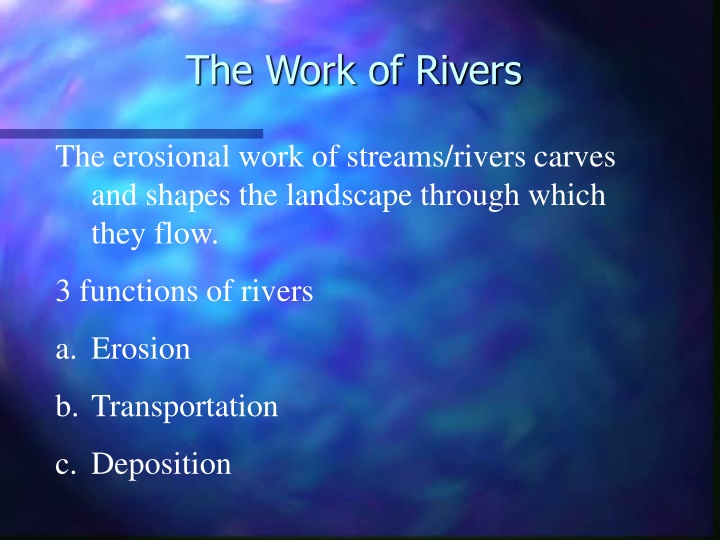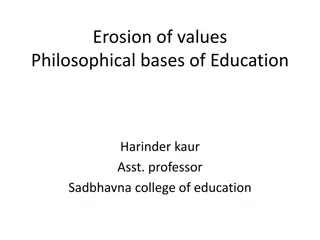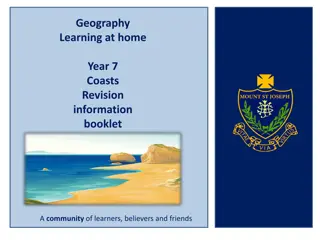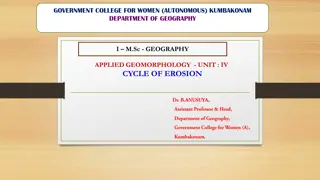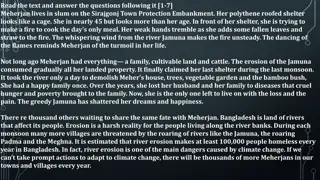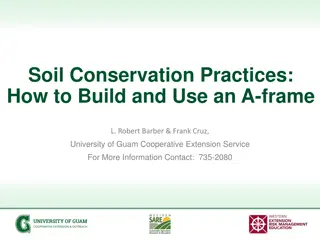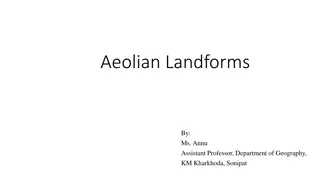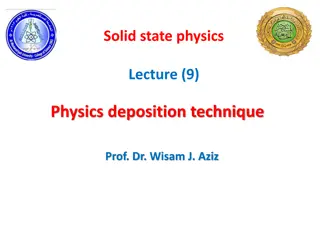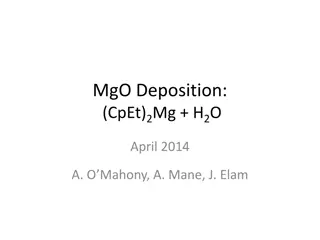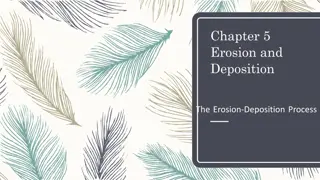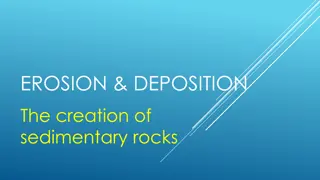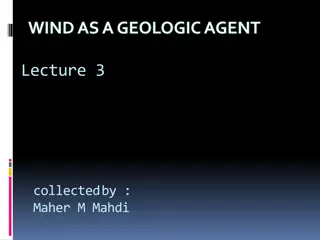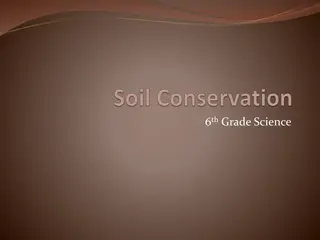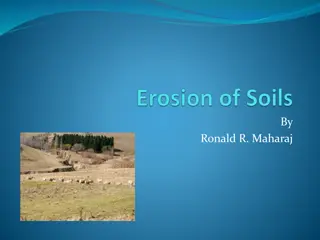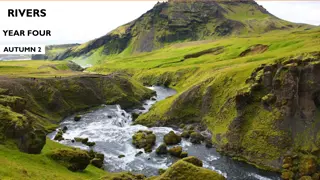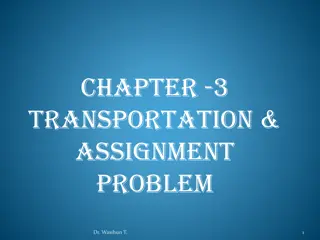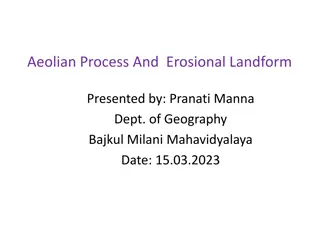The Work of Rivers - Erosion, Transportation, Deposition
The erosional work of rivers is showcased through erosion, transportation, and deposition processes. These include abrasion, attrition, hydraulic action, and solution/corrosion. The relationship of velocity and sediment size to erosion is also explored, along with the transportation methods of traction, saltation, and suspension.
Download Presentation

Please find below an Image/Link to download the presentation.
The content on the website is provided AS IS for your information and personal use only. It may not be sold, licensed, or shared on other websites without obtaining consent from the author.If you encounter any issues during the download, it is possible that the publisher has removed the file from their server.
You are allowed to download the files provided on this website for personal or commercial use, subject to the condition that they are used lawfully. All files are the property of their respective owners.
The content on the website is provided AS IS for your information and personal use only. It may not be sold, licensed, or shared on other websites without obtaining consent from the author.
E N D
Presentation Transcript
The Work of Rivers The erosional work of streams/rivers carves and shapes the landscape through which they flow. 3 functions of rivers a. Erosion b. Transportation c. Deposition
The Work of Rivers A. Erosion A river may erode in 4 ways 1.Abrasion/corrasion Load carried by a river will grind against its bed and sides. This process slowly wears the bed and sides away.
The Work of Rivers A. Erosion 2. Attrition When thrown against the sides and bed of rivers, the load gets broken into smaller pieces.
The Work of Rivers A. Erosion 3. Hydraulic action The work of turbulence in the water. Running water causes friction in the joints of rocks in a stream channel Joints may be enlarged Loosened fragments of rocks get swept away.
The Work of Rivers A. Erosion 4. Solution/Corrosion Certain minerals in rocks like limestone can be dissolved in water. Rocks are then eroded.
The Work of Rivers Relationship of velocity and sediment size to erosion
The Work of Rivers B. Transportation (4 ways)
The Work of Rivers B. Transportation (4 ways) 1.Traction Larger and heavier rocks/gravels are dragged or rolled along the bed.
The Work of Rivers B. Transportation (4 ways) 2. Saltation (saltim: by leaps/jumps) Smaller and lighter rock fragments and sand hop and bounce along the river bed. At times, the distinction between traction and saltation may be difficult to determine.
The Work of Rivers B. Transportation (4 ways) 3. Suspension Some of the load like silt and clay (fine- grained) will float along. They may only be deposited when stream velocity reaches near 0. Turbulence in the water is crucial in holding a load of sediments.
The Work of Rivers B. Transportation (4 ways) 4. Solution Some minerals are transported in dissolved form. Especially chemical solution derived from minerals like limestone or dolomite.
The Work of Rivers C. Deposition A river will drop its load when: a. Volume decreases b. Speed decreases
The Work of Rivers C. Deposition A river s volume decreases when Dry season Dry region with high evaporation Presence of permeable rocks Receding flood waters
The Work of Rivers C. Deposition A river s speed decreases when It enters a lake It enters a calm sea It enters a gently sloping plain
The Work of Rivers The work of a river depends on its energy Energy a function of a. Volume of water b. Speed of water flow (dependent on gradient)
This powerpoint was kindly donated to www.worldofteaching.com http://www.worldofteaching.com is home to over a thousand powerpoints submitted by teachers. This is a completely free site and requires no registration. Please visit and I hope it will help in your teaching.
